This is the final installment of a five part series documenting parking minimums across the United States. Future graphs will explore parking minimums on a more local and conceptual level and will eventually include on-street parking policy as well.
There is no consensus on how to calculate minimum parking for high schools. The methods are so varied that I ended up leaving several cities off of this graphic in an effort to simplify comparisons. Still, despite my best efforts to use current national averages to build a fair basis of comparison, the numbers shown and the corresponding ranks of each city represent only one possible scenario and could shift significantly if different assumptions were used about student and staff population, built area, and/or the number of classrooms. The real lesson from this graph is the haphazardness with which minimums are calculated and the huge consequences for cities like Mesa that get it horribly wrong. Providing plentiful free parking to high school students gets them hooked on driving from an early age. It sets the expectation that driving is a rite of passage into adulthood and that any other method of getting around is immature or inferior. In a country with an obesity epidemic, that doesn’t seem to be the best lesson to teach. In a setting where equality should be a virtue, it provides a benefit to wealthier students, who have the means to drive a car, with funds that could go towards providing students (including those less well off) with a higher quality education.
Rather than make specific observations about the graph, I want to explore the real world effects of parking minimums for high schools. I chose at random two schools from Mesa, Arizona (the city with the highest requirement) and three from Milwaukee, Wisconsin (the only city listed that does not require parking). The five images show that Mesa requires far more parking than what seems from above to be typically used. On the other hand, Milwaukee’s lack of minimums does not translate to a complete lack of parking, but the difference is stark. Only a very small patch of each campus is allotted to parking, and the spaces provided are fully utilized.
Obviously these schools are not all exactly the same size, but the track shown in each image can be used for a sense of scale.
Mesa High School, Mesa, AZ
Dobson High School, Mesa, AZ
Madison High School, Milwaukee, WI
Vincent High School, Milwaukee, WI
Riverside High School, Milwaukee, WI
Do you have any observations? Feel free to leave them below.
As always, the graph in a vector format: high school


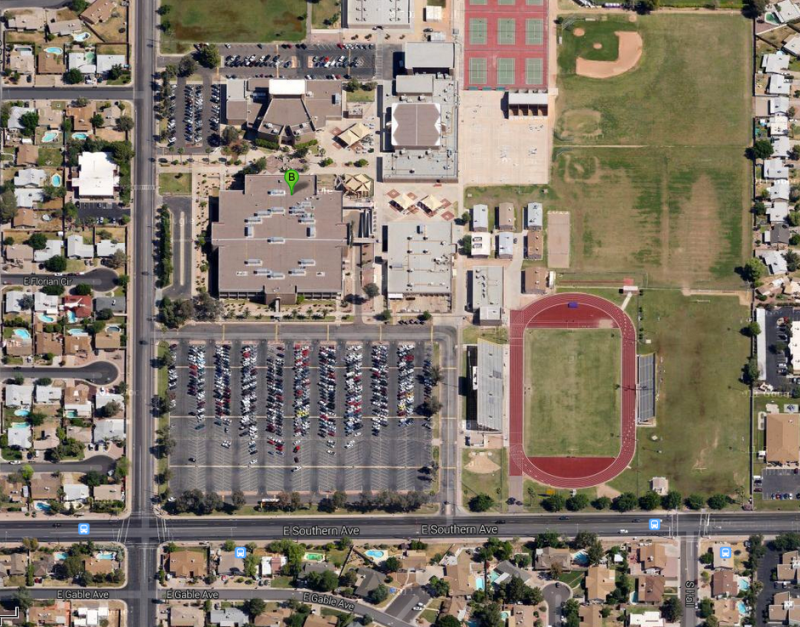
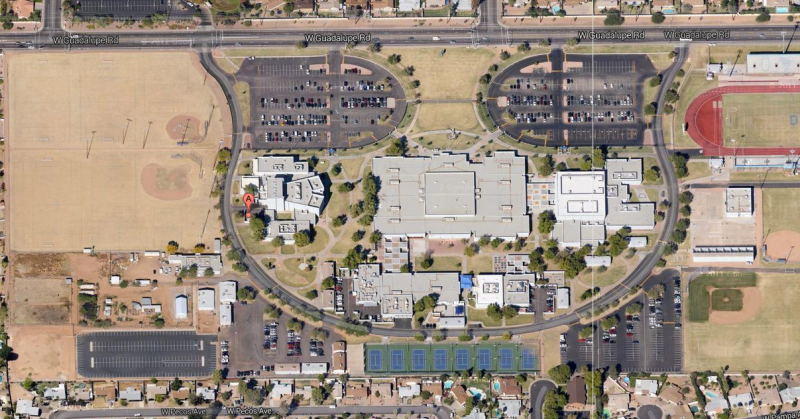
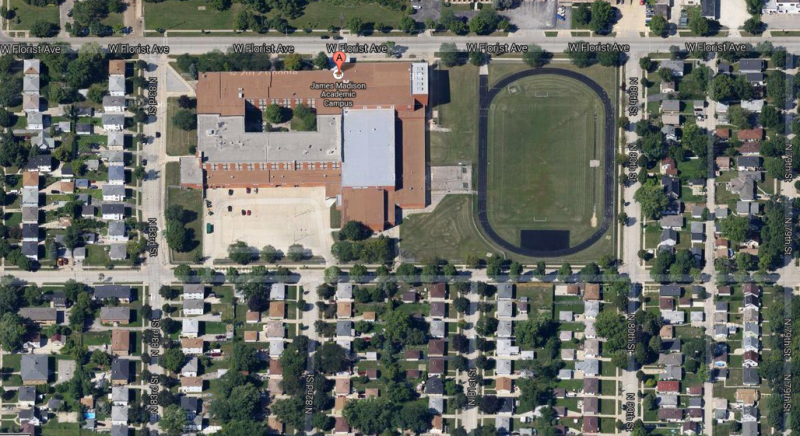
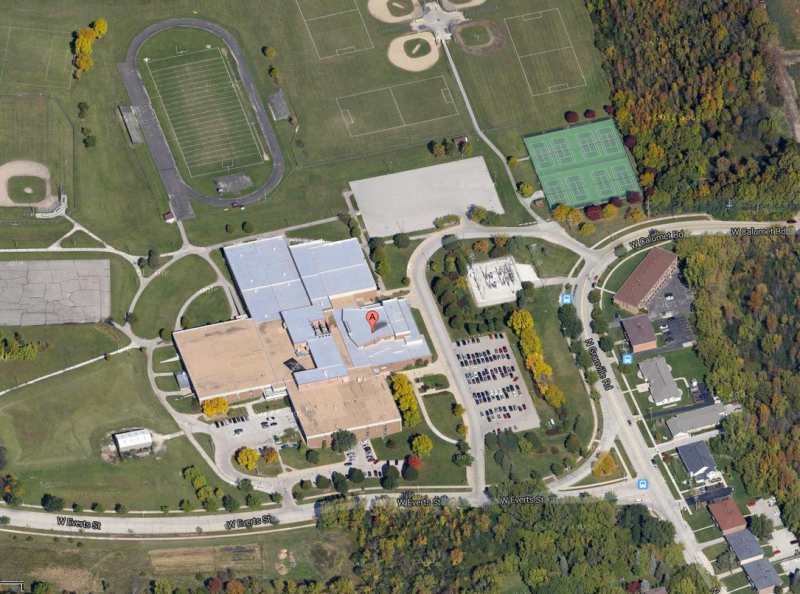
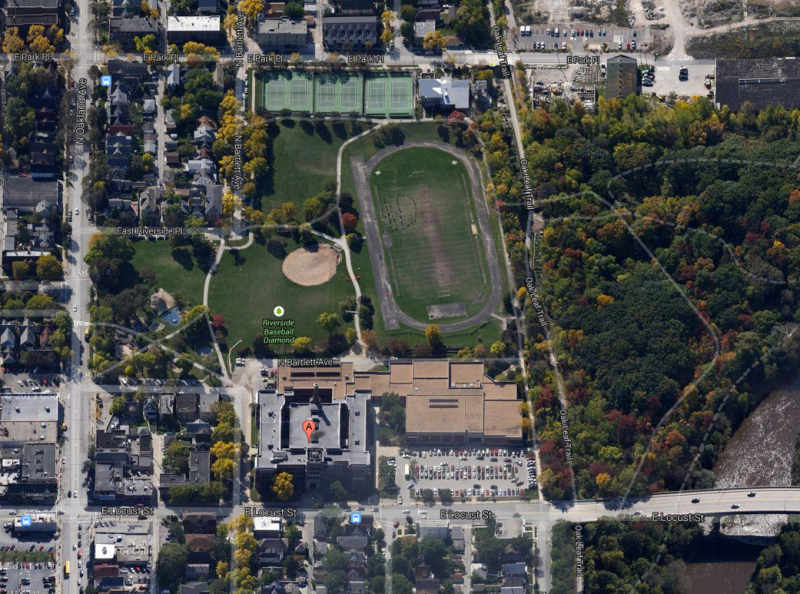

Interesting. Having lived in a city, I’m betting that a lot of pressure for parking for high schools comes from the people who live near or have businesses near the schools. In areas where there are not parking restrictions on nearby streets that would prevent high school students from parking on those streets, you can bet that the high school students would do so if there was not parking at the school, and you can bet that the neighborhood would be most unhappy about having the parking always being used up by high school students. On the other hand, the way to address this is maybe to at least try to do something like resident sticker parking on nearby streets (even just during the daytime hours), or limited parking hours (in business areas), or find other ways around the issue rather than blindly building more parking lots.
The images of Mesa are also telling in another way. Both look like areas where the side streets are largely not through streets and the major streets are often high-speed, multi-lane streets. The result is a city that is notably unfriendly to pedestrians and cyclists. And the sprawl that goes with such an approach is also not very conducive to public transportation. Are we surprised that they feel the need for large parking lots?
Reblogged this on Andrew Reker and commented:
Interesting to note that there are cities with no or very little parking minimums for high schools — looking at the images you can see how the school integrates or distances itself from its neighborhood.
Pingback: Mesa Tops the Charts in School Parking Spaces | APA News Feed
Pingback: A failing grade in parking requirements | TriTAG